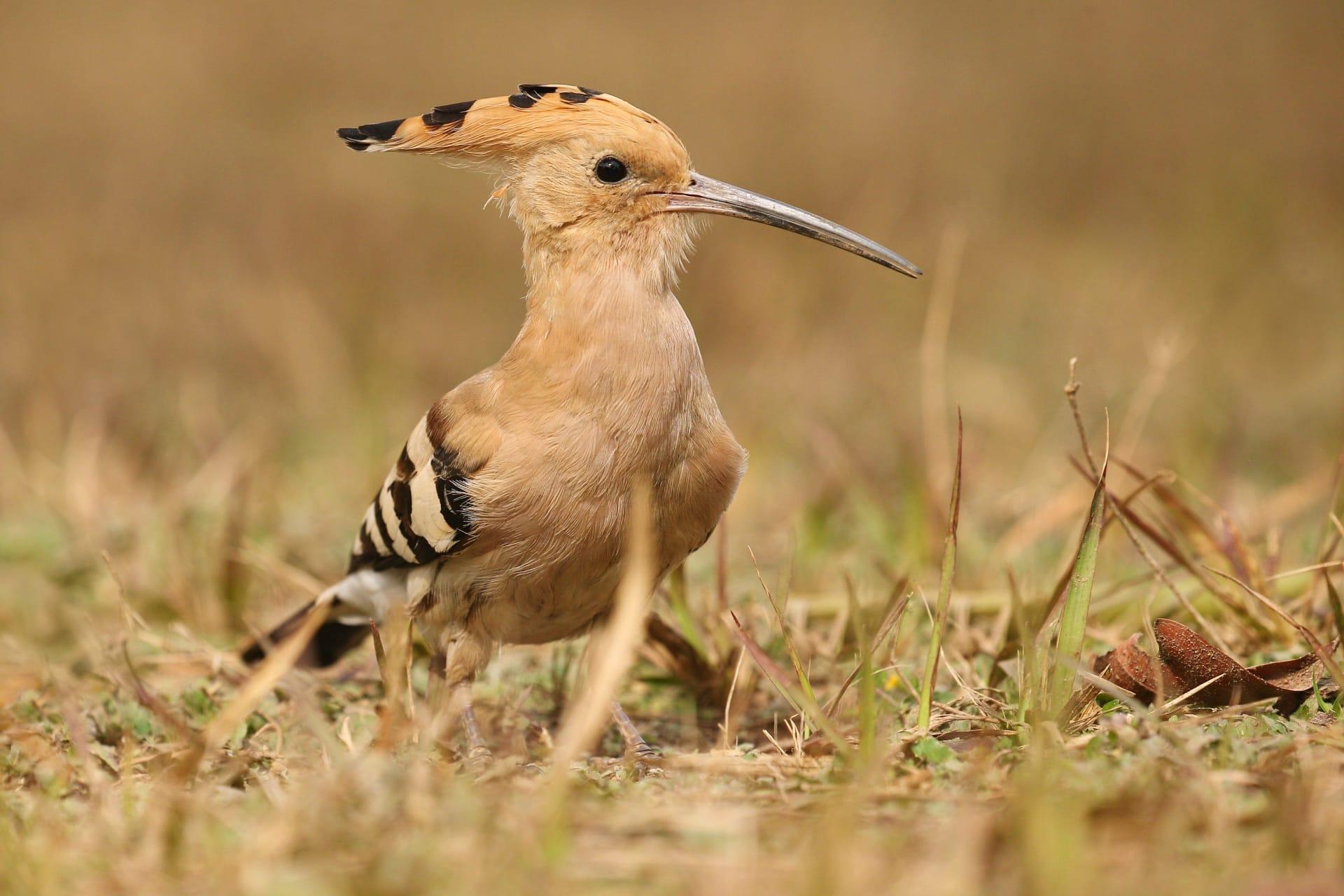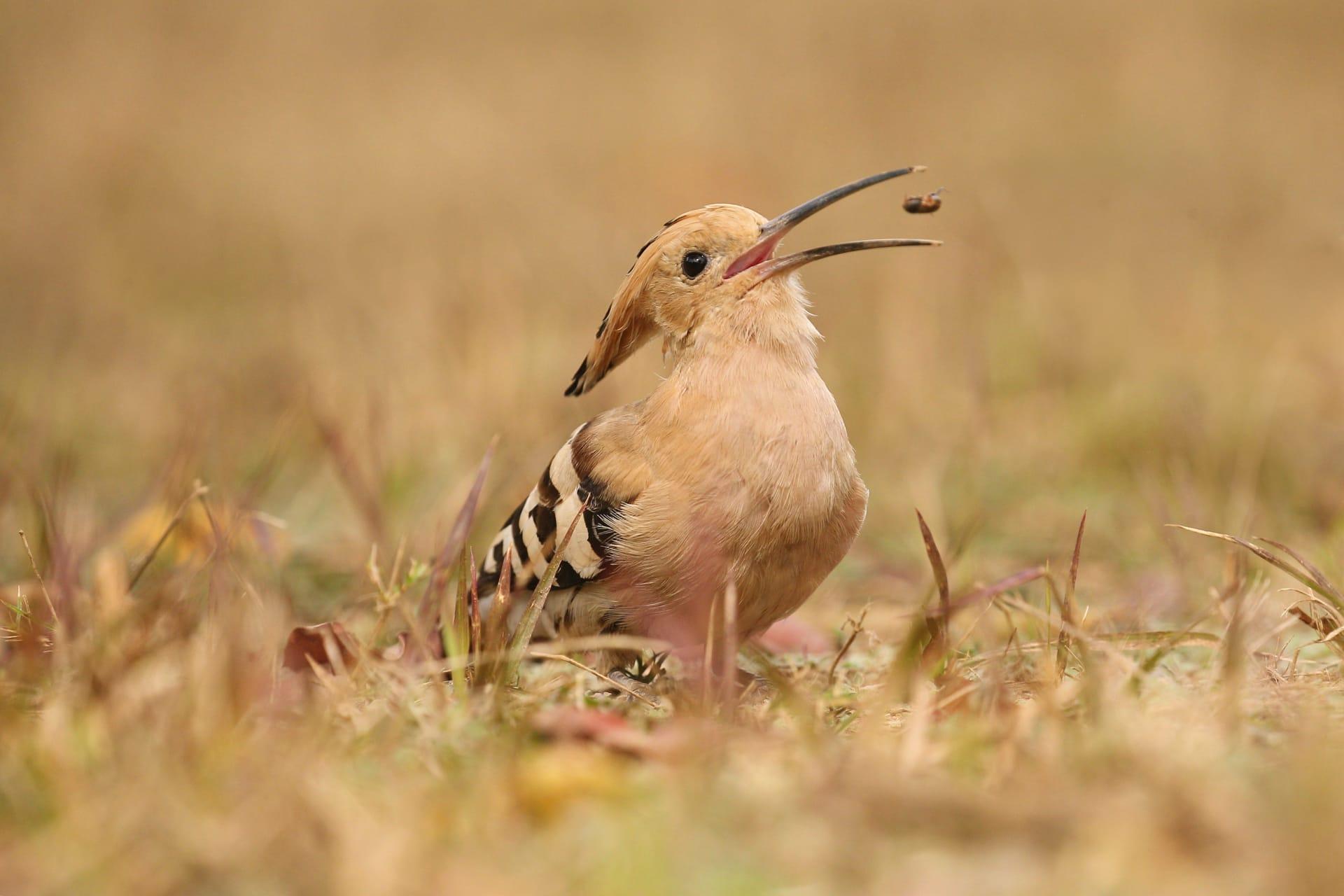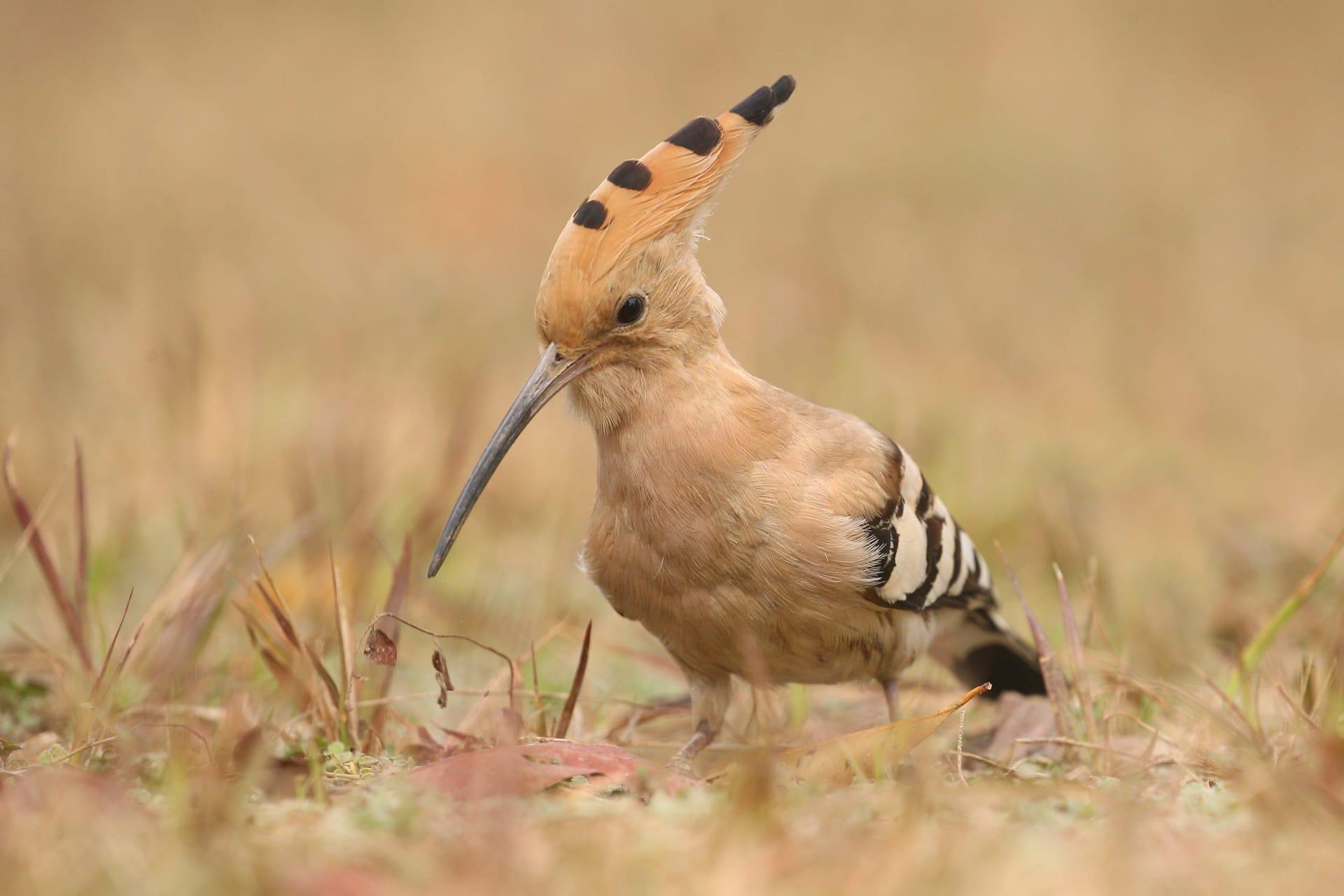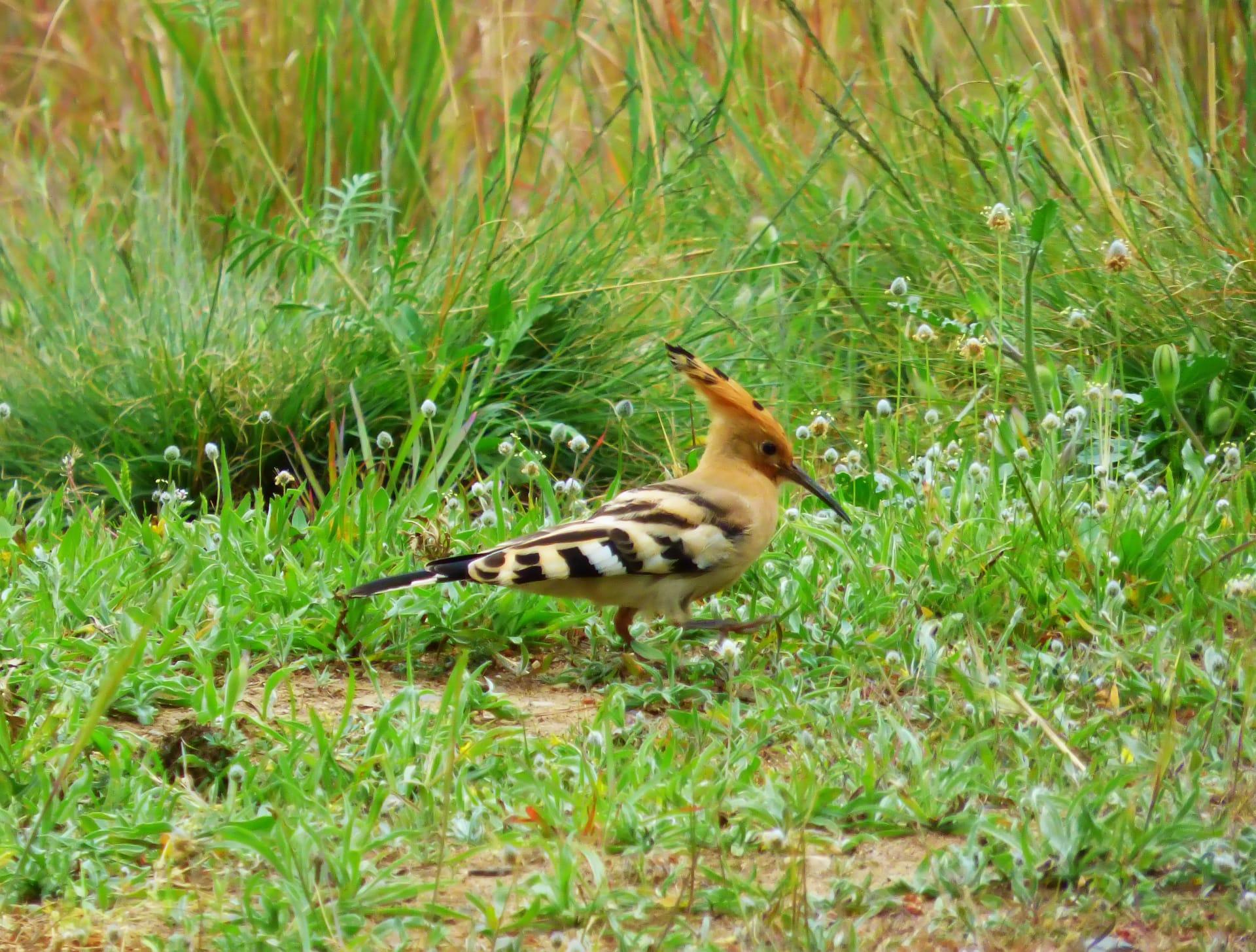Hoopoe Characteristics
- Home /
- Mini Encyclopedia /
- Animal /
- Hoopoe Characteristics
1
The Hoopoe, known scientifically as Upupa epops, is a distinct bird, easily recognized by its unique features. Adult Hoopoes typically measure about 25 to 32 centimeters in length, with a wingspan ranging from 44 to 48 centimeters. They weigh approximately 46 to 89 grams. Their lifespan in the wild is roughly 10 years, although this can vary based on environmental factors. A prominent feature of Hoopoes is their striking plumage; they possess a pinkish-brown body, black and white wings, and a long, black, and white tail.
One of the Hoopoe's most remarkable organs is its long, tapering bill. This bill, measuring about 4 to 5 centimeters, is not only distinctive in appearance but also highly functional. It is used for probing the soil to extract insects and larvae. The bill's structure allows the Hoopoe to delve deep into crevices and beneath objects to find food. Additionally, it plays a crucial role during nesting, as Hoopoes use it to dig nesting burrows in trees or cliffs and to feed their young.

2
Question: Why do Hoopoes have such a distinctive crown of feathers?
Answer: The crown of feathers, a notable feature of the Hoopoe, is more than just a visual trait; it serves several practical purposes. This crest, which can open into a fan-like shape, is used in social and defensive displays. During courtship, the male Hoopoe erects this crest to attract a mate. Similarly, when threatened, both males and females display their crest as a form of intimidation towards predators. The crest's patterns and movements are also a means of communication between Hoopoes, particularly during the breeding season.

3
Hoopoes are known for their distinctive flight, which is characterized by a rhythmic, undulating pattern. This flight style, often described as 'butterfly-like', involves rapid wingbeats followed by a short glide on closed wings. This method of flight is not only graceful but also energy-efficient, allowing Hoopoes to cover long distances while foraging for food.
When it comes to feeding, Hoopoes are predominantly insectivorous. Their diet mainly consists of insects like beetles, earwigs, crickets, locusts, and ants, along with occasional small reptiles or frogs. The Hoopoe's hunting strategy is marked by its use of the long, slender bill to probe into the ground, under leaves, and into crevices to find and extract prey. Their acute sense of smell aids in locating insects below the surface.

4
The Hoopoe inhabits a variety of environments, including open country with scattered trees, gardens, orchards, and parklands. They prefer areas that offer ample ground for foraging and trees or cliffs suitable for nesting. Hoopoes are found across Afro-Eurasia, adapting well to both rural and urban settings, as long as they have access to their basic habitat requirements.
Regarding reproduction, Hoopoes are monogamous during the breeding season. They nest in cavities, often in trees, cliffs, or walls. The female lays between 5 to 7 eggs, which are incubated for about 16 days. The male feeds the female during incubation. After hatching, both parents feed the chicks. The young Hoopoes fledge in about 26 to 29 days. Remarkably, Hoopoes have a unique defense mechanism for their nest: the chicks can produce a foul-smelling liquid to deter predators.

5
Book: "The Life of the Hoopoe" by James A. Smith, published in the UK in 1998. This comprehensive book delves into the biology, behavior, and habitat of the Hoopoe. Smith, an ornithologist, provides detailed observations of the Hoopoe in various environments, offering insights into their feeding habits, breeding rituals, and migratory patterns. The book is rich in anecdotes, making it both informative and engaging for bird enthusiasts and general readers alike.
Book: "Winged Wonders: A Journey Among Birds", with a chapter on Hoopoes by Maria Gonzalez, published in the USA in 2005. Gonzalez, a renowned wildlife photographer, combines stunning photography with insightful narrative. The chapter on Hoopoes captures their vibrant plumage, distinctive behavior, and the unique challenges they face in their natural habitats. This book is not only a visual feast but also an educational journey through the world of birds.